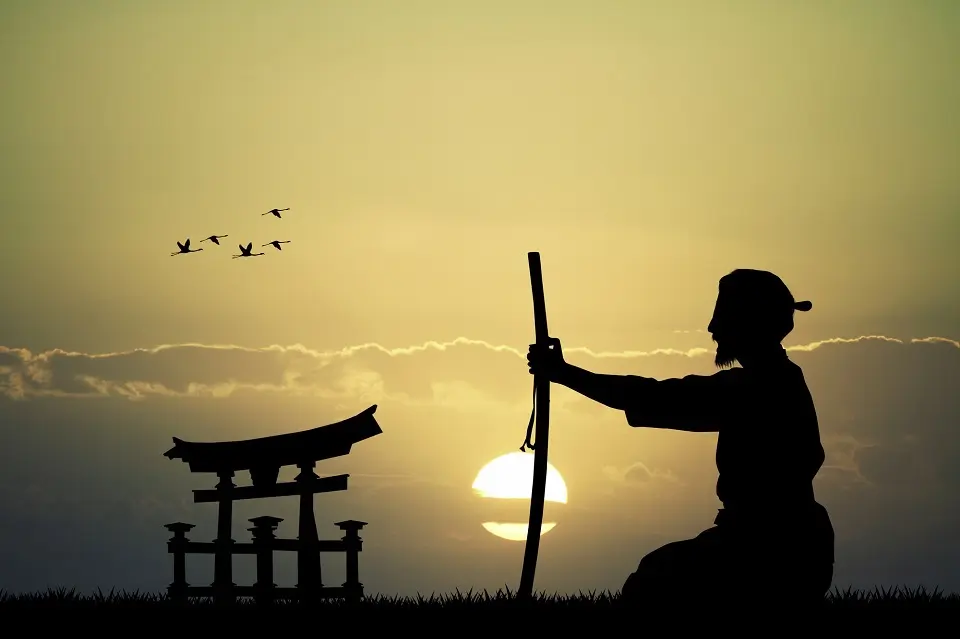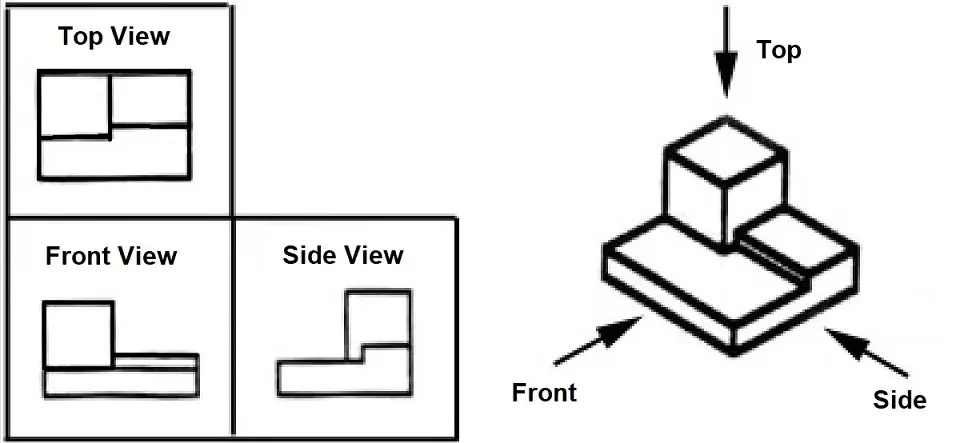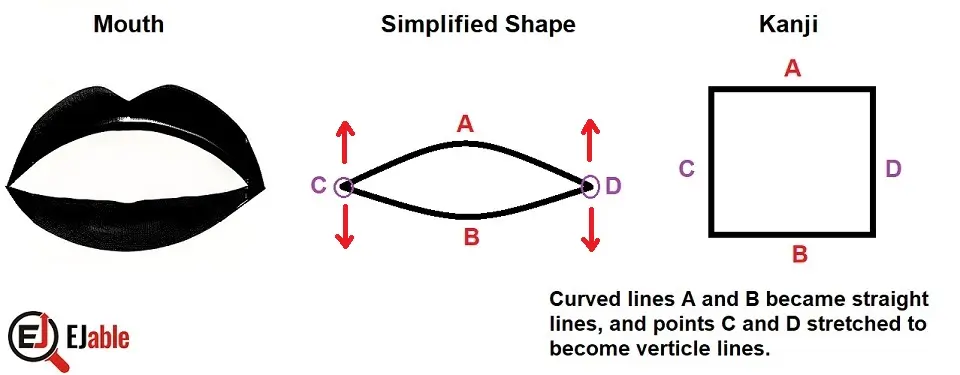How to Learn Kanji Fast: Origin of Kanji Characters and Mnemonics

As a beginner learning Kanji, have you ever wondered about the best ways to learn and remember Kanji Quickly? You have come to the right place to learn and remember Kanji quickly, which is essential to mastering the Japanese language.
Kanji is the intricate system of pictographic and, often, ideographic characters that forms a crucial part of the written Japanese and Chinese language. Kanji’s roots run deep in Japan’s culture, philosophy, and collective memory, spanning a rich history of over a millennium and a half.
Unlike the English alphabet or phonetic scripts of other languages, learning Kanji gives a deeper insight into the thought process of Japanese culture and people. Learning Kanji effectively is vital not just to know the language but to have a deeper understanding of various cultural aspects.
This guide about Kanji and the individual articles on various characters offer easy and effective ways to learn and remember Kanji characters.
(Skip the rest to jump directly to the Kanji List.)
Introduction and History of Kanji
Originating from China, Kanji evolved as a pictographic language, where each character symbolizes an object, idea, or abstract concept.
These pictographs further transformed and evolved over time, giving rise to what we recognize today as modern Kanji. The evolution of Kanji characters from basic pictograms to more complex ideograms is a testament to the passage of time and reflects the intricate socio-cultural transformations of Japanese society.
While some Kanji characters’ origins are well-documented, and their pictographic roots visible even today, others’ origins remain unclear. Yet, it’s fascinating to decipher the hidden meanings and origins of these symbols.
Some of the oldest kanji shapes are found in the Oracle Bone script, Bronze Inscription, and the Seal Script and give us a good insight into the origins of various Kanji characters.
However, over time, the shapes of Kanji got simplified, and we will throw some lights to help you remember modern Kanji quickly and effectively with visual explanations.
Why Learn Kanji?
For the Japanese people, Kanji holds a unique and profound significance, extending far beyond the utility of a mere phonetic alphabet employed in many other cultures. It resides deeply within their hearts, standing as more than a system of writing.
Moreover, Kanji serves as an emblem of their cultural heritage, a testament to their history, and an avenue for artistic expression, e.g., in calligraphy. In many respects, Kanji is intertwined with the very fabric of their societal identity beyond the boundaries of mere communication.
All the above facts make it vital to learn Kanji if you plan to live in Japan and wish to integrate into Japanese society. The following sections are guides to the best ways of learning Kanji.
About This Initiative for Beginners to Learn Kanji
This section, named “A Kanji, A Day” of EJable, aims to help beginners learn and remember Kanji by delving into the origins of these intriguing characters and discovering the connection between their forms and meanings, and also creating mnemonics to be able to learn and remember these easily.
Where a clear origin or logic behind the shapes of any Kanji character isn’t identifiable, we aim to offer explanations and memory techniques to help learn and remember these. Please note that in such cases, the mnemonics may not be related to the origin of the shape and should be treated only as a memory technique.
Join us to learn Kanji, its history, and the stories behind the characters. We’ll give you tools to understand these interesting symbols. Dive into Kanji, where art, language, and history meet.
Start this trip to study Kanji as a lesson and an exciting adventure in the world of symbols. Each shape tells an old story. Let’s discover these symbols step by step together.
Best Methods to Learn and Remember Kanji Fast
- Start with the Right Mindset
- Understand 2-D views for 3-D objects
- Learn about the origin of Kanji characters
- Remember the common Kanji radicals
- Mnemonics: Create stories when the origin doesn’t make sense
- Observe and try to think
- Practice
1. Start and Continue with the Right Mindset
The right mindset while starting to learn and during the continuous process will be key in your Kanji learning journey. And believe me, this will be an ongoing journey because the world of Kanji is like an endless ocean.
As a beginner, if you start learning Kanji by thinking they are complicated and tough to remember, you will soon be frustrated. Instead, learn by liking the beautiful characters of Kanji script and by loving solving the mysteries around them.
2. Understanding Perspectives: 2-D Views for 3-D Objects
As in engineering drawings, Kanji characters represent 2-dimensional pictograms of 3-dimensional objects. The Kanji pictogram can be one of the three views of the object it represents. These views are as follows:
- Top view
- Side view
- Front view
Learning engineering drawings is the basic course for engineering colleges. Similarly, one has to learn these concepts before starting on the journey to learn Kanji.
Just to give a very good example, look at the Kanji of Kuruma or vehicle to see how easy it is to remember this Kanji by knowing what a top view is. Similarly, the Kanji for the fire may be originally a top-view representation, but to remember it effectively, we can consider it the side view.
The concepts of 2-D views of 3-D shapes are as follows:


Being a written character, a Kanji can have two dimensions, even though it represents a 3-D shape. In such a case, a Kanji may represent either the front, side, or top views of the 3-D object.
It is like a director visualizing a scene from multiple angles before finalizing the perfect shot. Engineers, architects, and designers often look at objects from different perspectives to understand them better.
The world is not flat; it’s a symphony of shapes, dimensions, and angles. Hence, to comprehend the depth of an object, we utilize three primary viewpoints: top, side, and front. To make these concepts more relatable, let’s use the example of a common object: a car.
Top View:
Imagine a bird soaring high above, looking down at a car parked on the street. From this viewpoint, the bird can see the roof, the car’s shape, and perhaps a bit of the windows. But the bird can’t see the front grille, the car’s sides, or the tires. This aerial viewpoint is known as the ‘Top View.’ In the context of Kanji, when characters resemble an object seen from above, they present the top view.
A good example is the Kanji for a vehicle or car, which shows the top view of a chariot.
Side View:
Now, think about a pedestrian strolling by the same parked car. From their perspective, they can see the doors, windows, tires, and maybe a bit of the roof. But they can’t see the full shape of the car, the grille, or the back. This viewpoint from the side is called the ‘Side View.’ In Kanji, a character offering a side view resembles an object as it would appear from the side.
Front View:
Finally, envision yourself standing directly in front of the car. You can see the headlights, grille, hood, and possibly the windscreen. But you can’t see the car’s sides, back, or roof. This direct viewpoint is the ‘Front View.’ Similarly, in Kanji, a character presenting the front view mimics the object seen from the front.
These three views offer us different ‘slices’ of the same object, each adding unique information about its overall shape, structure, and appearance. When we understand an object from all these perspectives, we comprehensively understand its 3D form.
Thus, thinking in these three-dimensional terms to understand Kanji can be helpful. Just as our car looks different from the top, side, and front views, a Kanji character might also represent different aspects of an object depending on the ‘view’ it’s meant to represent. The result is a rich, multi-dimensional language that reflects the world around us in all its complexity.
Please note that the front and side views are interchangeable, depending on which side we are looking at an object from. A good example of a Kanji with a front or side view is the Kanji for fire, which shows the flames from the front or side.
3. Learn the Origin of Kanji Characters
While many Kanji characters have evolved over time to simplify the shape and, in that process, have lost the true connection with the original shape of the object they represent, many have not.
One good example of such characters is the kanji for the rice field, which clearly represents the shape of the top view of a rice field. You can find several such examples in our individual explanations of various characters in the Kanji script. Considering this, knowing the historical origin of a Kanji character helps you remember it quickly.
4. Remember Kanji Fast by Remembering Kanji Radicals
Many kanji are composed of smaller units known as radicals. These radicals can provide clues about the meaning or pronunciation of a kanji character. Understanding the common radicals can be a useful strategy for learning kanji.
Remembering the most common Kanji radicals before diving deep into learning Kanji will help you learn and memorize Kanji much faster and more effectively.
5. Mnemonics: Create Stories to Remember Kanji
As mentioned above, many characters in the modern Kanji script have changed drastically over time. Therefore, many Japanese Kanji characters significantly differ from the original Chinese Kanji.
Considering the above, when you cannot relate the shape of the Kanji character to the object it represents, use the mnemonics technique to remember the Kanji. You can do it by creating stories about the shape of the kanji by dissecting the Kanji into smaller individual shapes.
One excellent example of the mnemonics technique is the kanji of “before” or “in front of,” where we made a story to remember this Kanji. Some other examples are the Kanji of Taiyou (Sun) and kanji of location or place (“ba” or “jyou“).
6. Observe and Try to Think about the Shapes
Observation is one of the most powerful learning tools without consciously trying to learn.
If you are in Japan, observe the signboards of shops, the nameplates outside houses, signs on the railway stations, and anything with Kanji characters. Remember that we are not discussing reading books here because that is actual learning.
You will notice that observing and thinking about the Kanji on these boards can exponentially speed up your Kanji learning.
Moreover, you will find that often, your brain comes up with stories to help you remember a particular Kanji without even thinking about it consciously.
7. Rote Memorization: Practice
Who can dispute the importance of continuous practice for learning anything? Moreover, as mentioned, learning Kanji is not like passing a college degree; it is a lifelong journey.
Rote memorization is a learning technique based on repetition. The idea is to learn something by continuously repeating it, often without understanding the underlying principles or context. This technique can be useful for memorizing facts, lists, simple definitions, formulas, and other specific pieces of information.
For instance, when learning a new language, rote memorization might involve repeatedly writing, reading, or saying a new word or phrase until it’s been committed to memory. In the context of Kanji, it could be used to memorize the shapes and meanings of different characters.
Practicing reading and sometimes writing will help you etch the beautiful shapes of Kanji in your memory. You will be surprised by how often you find a new and more effective mnemonic technique for the same Kanji you already know.
Important Points to Know for Learning Kanji
Avoiding Complex Curves:
Curved shapes like circles and ovals are not commonly used in kanji. This is partially due to the tradition of writing kanji with a brush, which is better for straight lines and angles.
For instance, the kanji 月 for the moon and Month, pronounced as “Tsuki, for the moon and “Getsu” or Gatsu for “Month,” may look more like a square or rectangle than an oval or circle. Another easy example of this is the Kanji for mouth (口), as explained below.
The point to remember is that round or oval shapes are converted to approximate squares or rectangles. The following subheading explains it visually.
Conversion of Points into Straight Lines
Imagine the shape of the mouth (口) or the crescent shape – such shapes with curved lines meeting each other at a point are generally covered as follows:
- Curved lines become straighter in the Kanji.
- The meeting points of the lines are stretched to straight lines.
The following picture for the kanji of mouth (口) visually easily explains this concept:


Importance of Balance in Kanji Characters
Balance is a key principle in writing kanji characters, making each character look aesthetically pleasing.
Let’s look at the kanji character for “tree,” which is 木 (ki). If you notice, it has a vertical line in the middle, which is balanced by two diagonal lines on either side at the top and a horizontal line at the bottom. This symmetry and balance make the character look harmonious.
Another example is the kanji for “fire” 火 (hi). This character also has a central vertical line and symmetrical elements on either side. The three lines at the top balance the single line at the bottom, again providing a balanced look.
These are just two examples, but the principle of balance applies to many kanji. Balance doesn’t always mean symmetry but rather an even distribution of visual weight throughout the character.
The goal is to have each character look stable and harmonious and not skewed or heavy on one side. This is one of the many aspects of the art and beauty of kanji.
Avoiding Overlapping Lines
Kanji characters rarely have lines that overlap with one another. Instead, lines typically intersect at angles, creating each character’s unique shape and structure. A couple of examples of this are as follows:
- The kanji for “person,” 人 (hito), is a simple one with two strokes. You’ll notice that the lines intersect, but they do not overlap each other.
- Another example is the kanji for the ‘Day’ or ‘Sun’ 日 (hi or nichi). It is a square-like character consisting of four strokes, none overlapping. The vertical lines intersect the horizontal lines at angles, which helps create the character’s structure.
These are relatively simple kanji characters. As you move to more complex kanji, you will see more lines intersecting at various angles, but still, the principle of avoiding overlapping lines holds true.
Please note that there are a few exceptions to this rule, as with all rules in any language. Some kanji do feature overlapping lines, but these are few and far between. The principle of avoiding overlapping lines can be a helpful guideline when you’re learning kanji.
You may also find this guide about the stroke orders of Kanji characters interesting.
A Kanji a Day: Easily Remember Kanji
Click “ctrl C” to find the Kanji you want from the following list and see how to memorize it quickly and effectively.
Please note that we do not call this section “A Kanji a Day” to advise you to remember only one Kanji per day :). This name is because every day, we try to add the logic behind the shape of one kanji and how to remember it.
Please note that if you look at the following Kanji table on a mobile device, please swipe left and right to view all columns.
If you are preparing for JLPT, you may also like to check the following:


A long-term ex-pat in Japan, Himanshu comes with an IT background in SAP consulting, IT Business Development, and then running the country operations of an IT consulting multinational. Himanshu is the co-founder and Managing Director of ReachExt K.K. and EJable.com. He is also an Advisory Board Member of a Silicon Valley AI/IoT startup.

